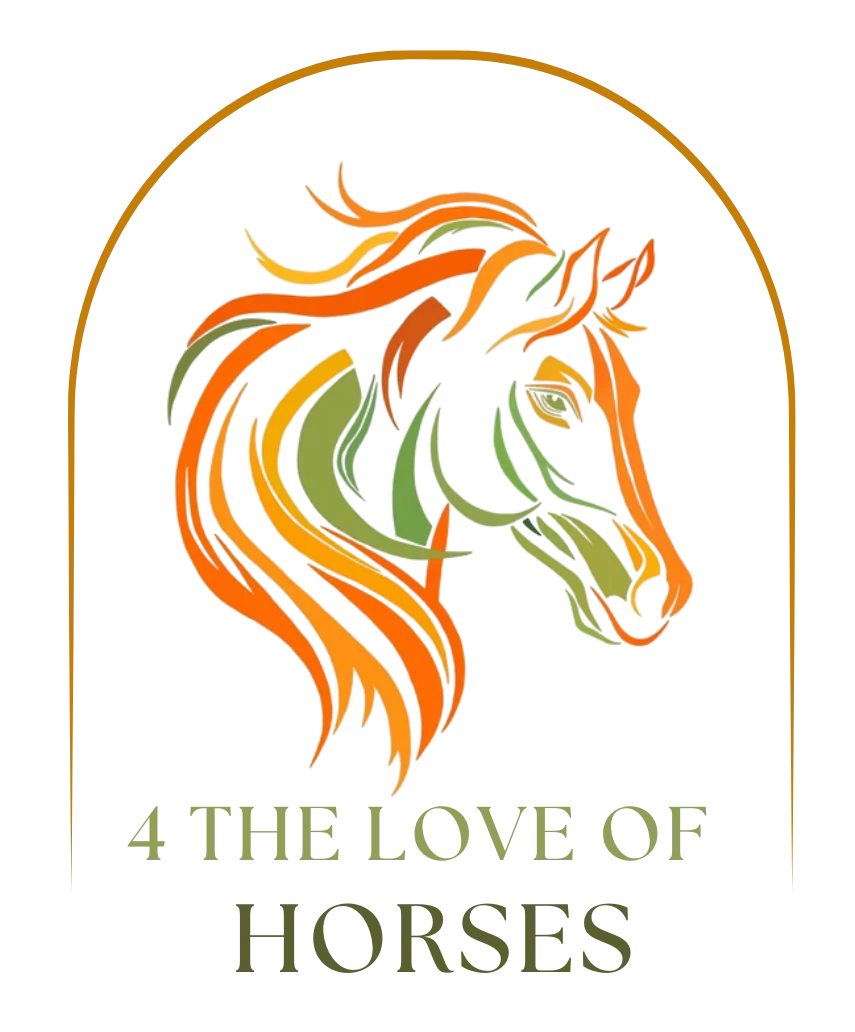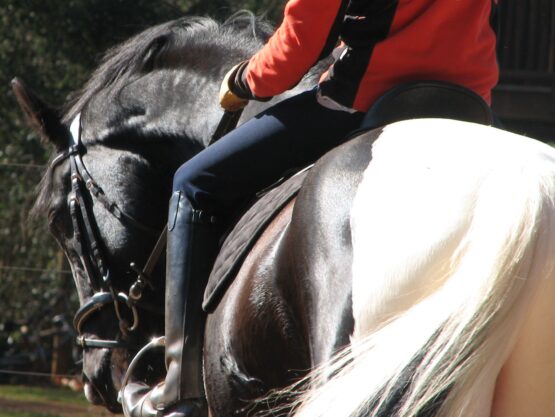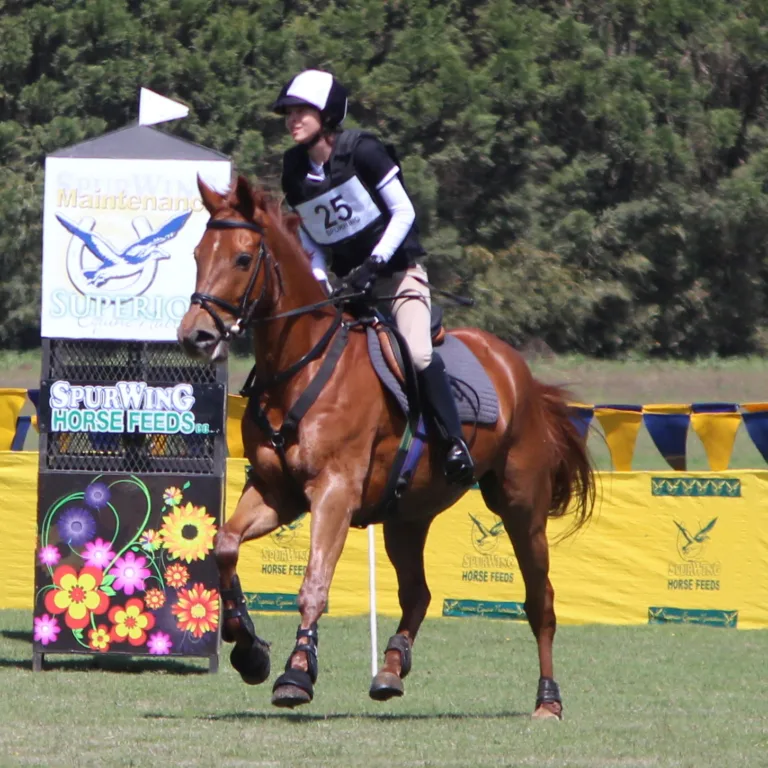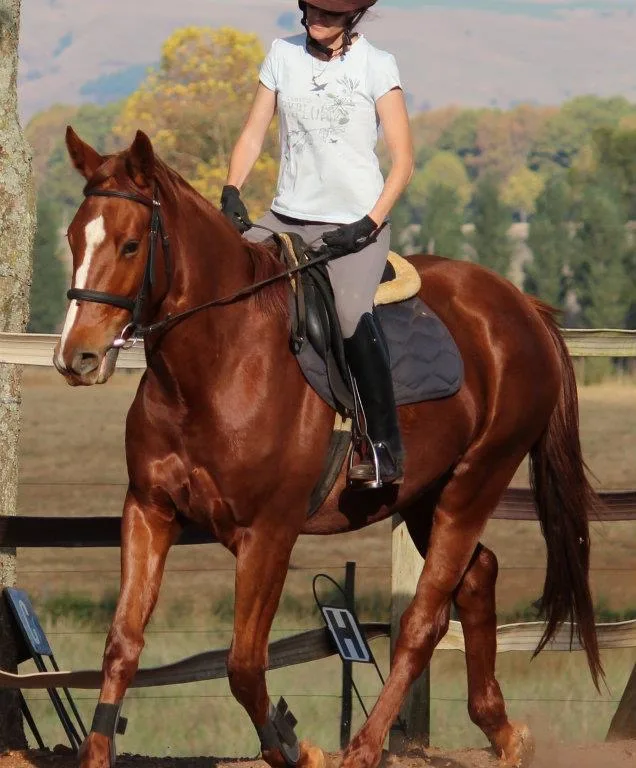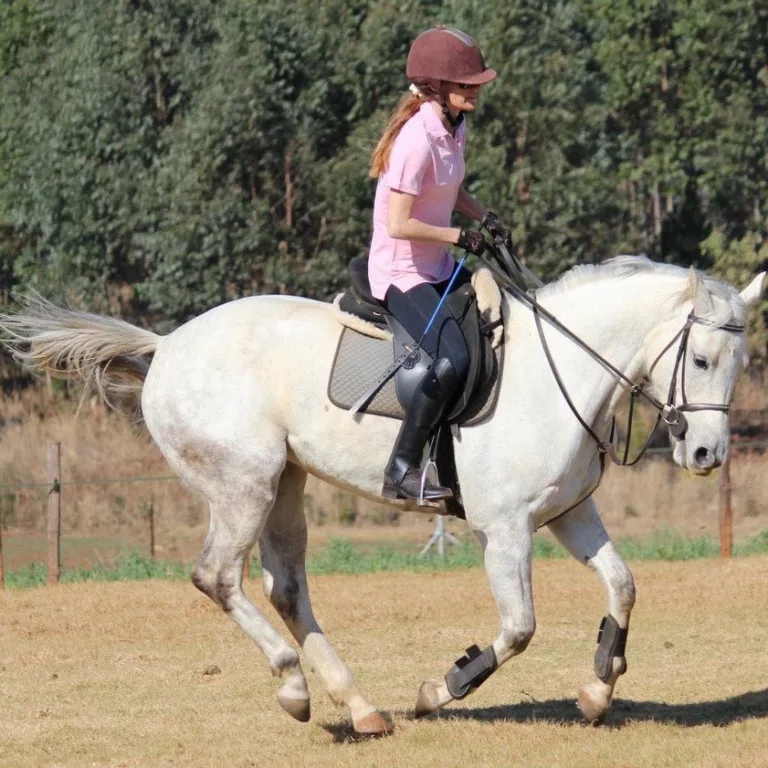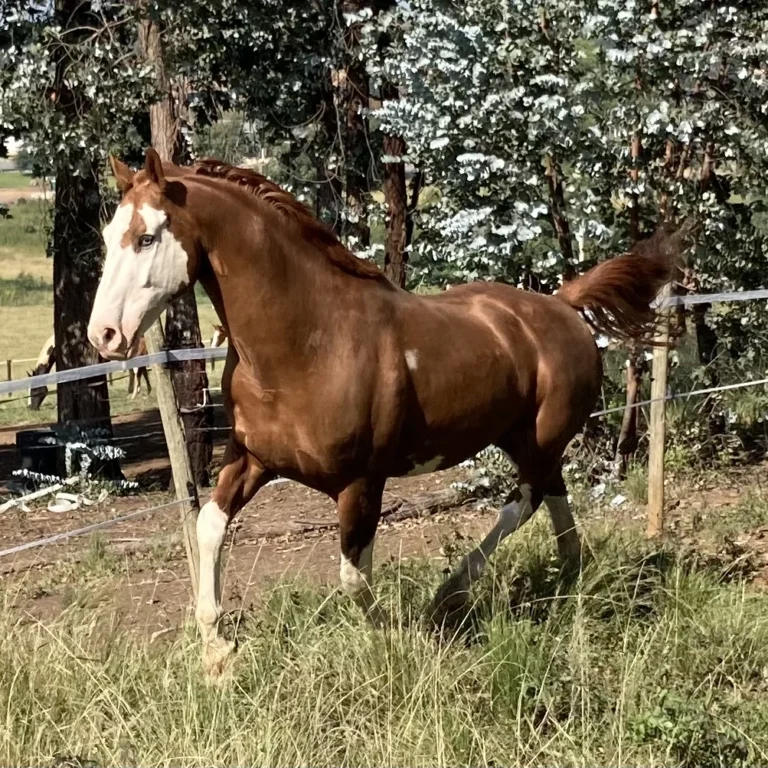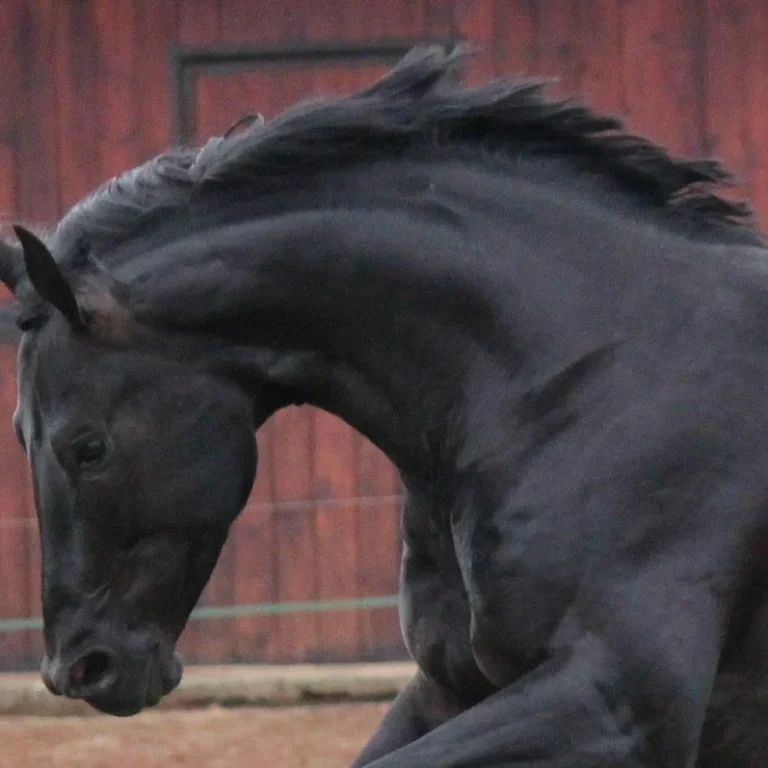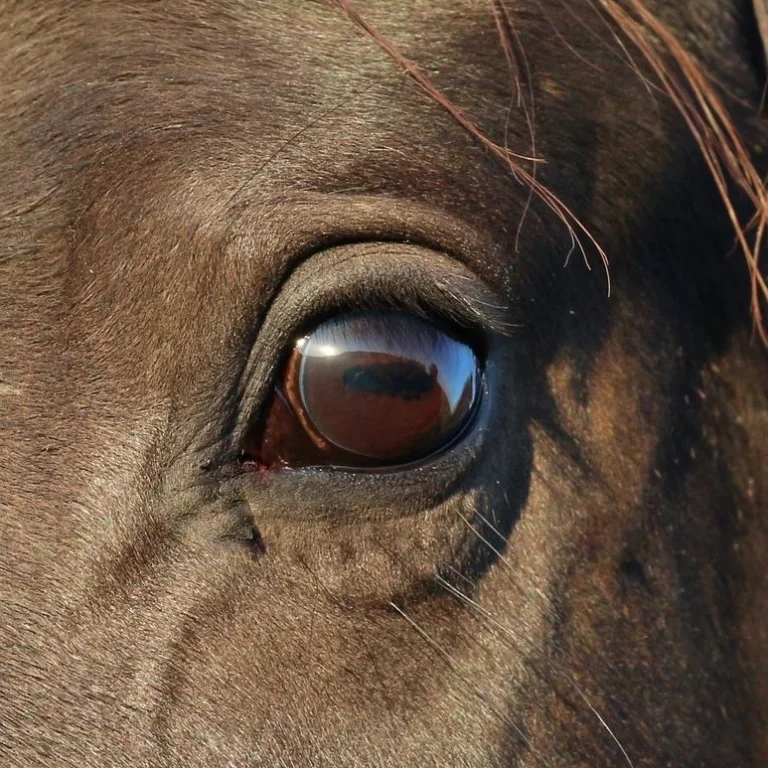The Basic Building Blocks of Horse Training: Mastering Essential Concepts
Horse training is a nuanced and rewarding journey, where the connection between rider and horse is forged through a mutual understanding of fundamental principles. Mastering the basic building blocks of horse training lays the groundwork for a harmonious partnership, transforming a spirited animal into a willing and responsive companion. In this exploration, we delve into the essential concepts that serve as the cornerstone for successful horse training, recognizing that a well-trained horse is not just a testament to the rider’s skill but also to the strength of the bond between human and equine.
The Foundation of Equine Partnership
At its core, the art of horse training is about establishing a language of communication between rider and horse. The more adept one becomes at interpreting the subtle cues and signals of the horse, the more harmonious and effective the training process becomes. Each interaction, whether on the ground or in the saddle, contributes to building a relationship based on trust, respect, and clear communication.
The Symbiotic Relationship
The relationship between a rider and their horse is symbiotic, with each relying on the other for support and guidance. A well-trained horse not only responds to commands but also anticipates the rider’s intentions, creating a seamless dance of cooperation. Conversely, a skilled rider understands the nuances of equine behavior, adapting their cues to the individual personality of the horse. This mutual understanding forms the bedrock of a successful partnership, enhancing not just performance but the overall well-being of both horse and rider.
The Journey to Mastery
Embarking on the journey to master the basic building blocks of horse training is not merely a pursuit of skill; it is a commitment to a lifelong journey of learning and growth. As we explore the key concepts in the following sections, it becomes evident that each step in training is interconnected, laying the foundation for more advanced techniques. Whether you are a novice equestrian or an experienced rider, revisiting these fundamental principles is a reminder that the path to mastery is a continuous loop of refinement and understanding.

Understanding the Horse
Horse Behavior and Communication
Body Language
Horses are masterful communicators through their body language, expressing a wide range of emotions, intentions, and reactions. Understanding the nuances of equine body language is pivotal for effective communication between rider and horse.
- Ears: The position of a horse’s ears can convey their mood. Forward-pointing ears may indicate interest or alertness, while pinned-back ears can signal discomfort or aggression.
- Eyes: The eyes are windows to a horse’s soul. Soft, relaxed eyes indicate a calm state, while wide or rolling eyes may denote fear or nervousness.
- Posture: The horse’s overall posture, including the position of the head, neck, and tail, provides insights into their emotional state. A raised head and arched neck might signify excitement or agitation, while a lowered head and relaxed body indicate calmness.
Vocalizations
Horses communicate through a variety of vocalizations, each serving a specific purpose. Recognizing and interpreting these sounds is crucial for understanding their needs and emotions.
- Whinnies and Neighs: Typically expressive of excitement or a desire for social interaction, whinnies and neighs are common vocalizations during feeding times or when horses are separated.
- Snorts and Blows: These can indicate a horse is clearing its respiratory passages or expressing mild alarm.
- Nicker: A soft, low sound often associated with positive interactions, such as when a horse greets a familiar person or fellow horse.
Building a Bond with the Horse
Establishing Trust
Trust is the cornerstone of any successful relationship with a horse. Establishing trust involves consistent and positive interactions, both on the ground and in the saddle.
- Gentle Approach: Approach the horse calmly and avoid sudden movements. Speak in a reassuring tone to create a sense of comfort.
- Consistent Handling: Be consistent in your actions and reactions. Horses thrive on predictability, and a steady, reliable handler fosters a sense of security.
- Positive Reinforcement: Reward positive behavior with treats, pats, or verbal praise. This positive reinforcement creates a positive association with training and interaction.
Recognizing Individual Personalities
Just like people, each horse has a unique personality. Recognizing and respecting these individual traits is crucial for tailoring training methods to suit their needs.
- Observation: Spend time observing the horse in various situations to understand its quirks, preferences, and reactions.
- Adaptability: Tailor your training approach to suit the horse’s personality. Some horses may respond well to assertive leadership, while others may require a more gentle touch.
By honing your ability to read horse behavior, decipher vocal cues, and build a foundation of trust, you pave the way for a strong and communicative partnership with your equine companion. This understanding forms the bedrock for successful horse training, fostering a relationship built on mutual respect and cooperation.
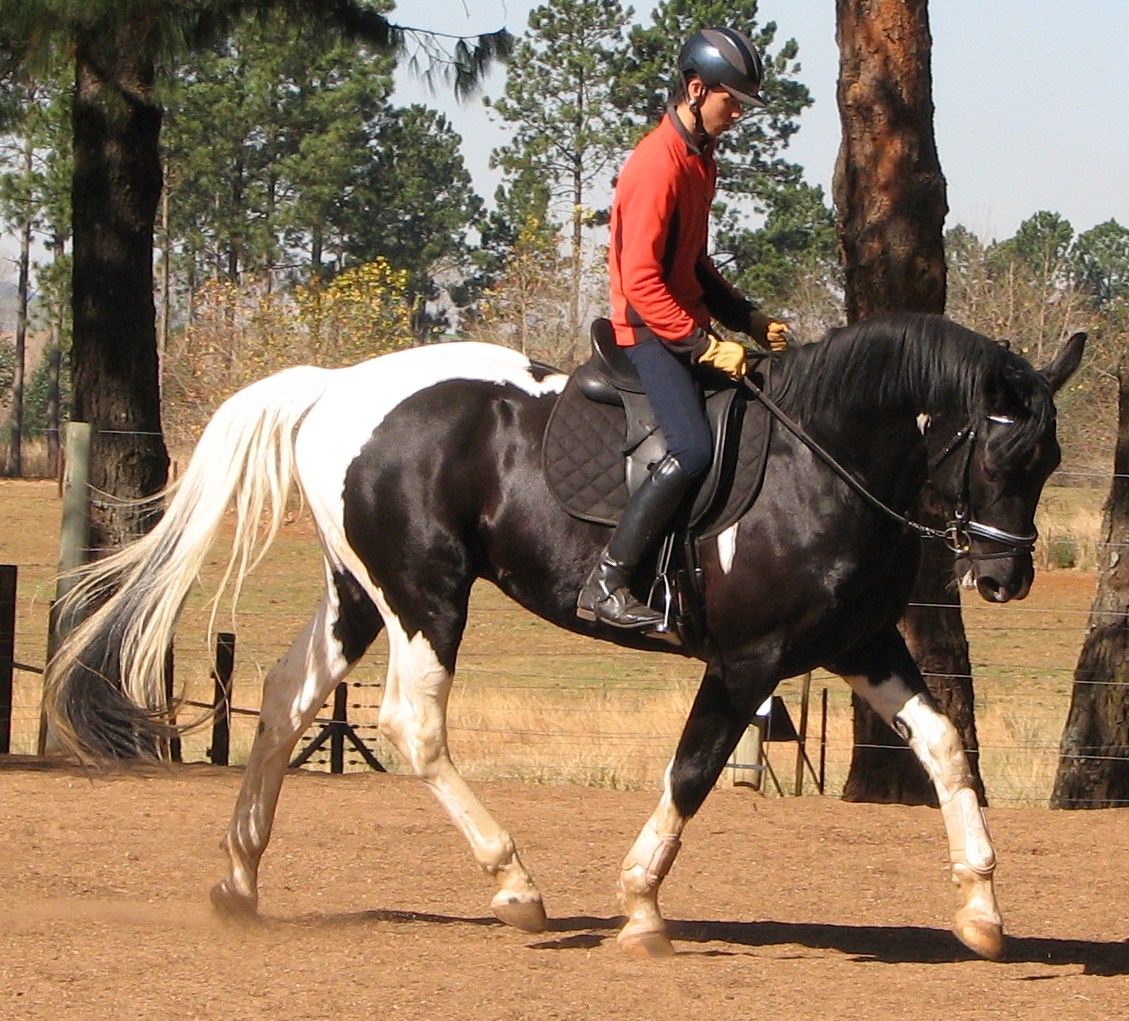
Essential Equipment for Horse Training
Introduction to Necessary Gear
Before embarking on the journey of horse training, it’s crucial to familiarize yourself with the essential gear that forms the foundation for a safe and effective training experience. This gear not only facilitates communication between rider and horse but also ensures the comfort and well-being of both.
- Bridle: The bridle is a fundamental piece of equipment that includes the bit, reins, and headstall. It is used for guiding and controlling the horse while riding.
- Saddle: A well-fitted saddle is paramount for rider comfort and the horse’s back health. Saddles come in various styles, each designed for specific disciplines, and proper fit is essential to prevent discomfort or injury.
- Saddle Pad or Blanket: Placed between the saddle and the horse’s back, a saddle pad provides additional comfort and helps absorb sweat.
- Halter and Lead Rope: Used for leading the horse on the ground, halters and lead ropes are indispensable for groundwork and basic handling.
- Grooming Tools: Brushes, combs, and other grooming tools are essential for maintaining the horse’s coat, mane, and tail. Regular grooming not only keeps the horse clean but also promotes bonding.
Proper Fitting and Usage of Tack
Bridle:
- Bit Fitting: Ensure the bit is the right size and shape for the horse’s mouth. Improper bit fit can cause discomfort and resistance.
- Headstall Adjustment: Adjust the headstall so it is snug but not too tight. The browband should sit just above the eyes without rubbing.
Saddle:
- Tree Size: The saddle tree should match the shape and width of the horse’s back. A professional saddle fitting ensures proper alignment and weight distribution.
- Girth or Cinch: Fasten the girth snugly but not too tight, allowing for breathing room. Check for any signs of discomfort, such as pinching or rubbing.
Halter and Lead Rope:
- Halter Fit: The halter should sit securely but not too tight around the horse’s head. Two fingers should fit between the halter and the horse’s skin.
- Lead Rope Handling: Hold the lead rope with enough slack to avoid causing discomfort, but maintain control. Practice clear communication through subtle cues.
The Importance of Comfortable and Safe Equipment for Both Horse and Rider
Ensuring the comfort and safety of both horse and rider is paramount in horse training. Ill-fitting or inappropriate gear can lead to discomfort, resistance, and even injury.
- Preventing Discomfort: Properly fitted tack prevents chafing, rubbing, and pressure points that can cause discomfort for the horse. Regular checks and adjustments are essential as the horse’s physique may change over time.
- Promoting Rider Stability: A secure and well-fitted saddle not only ensures the horse’s comfort but also promotes stability for the rider. This stability is crucial for effective communication and rider confidence.
- Safety Considerations: Well-maintained tack reduces the risk of accidents or injuries. Regular inspections of equipment, including checking for loose stitching or worn-out parts, are crucial for safety.
By understanding the necessity of each piece of equipment, ensuring proper fitting, and prioritizing comfort and safety, horse trainers create an environment conducive to effective communication and a positive training experience for both horse and rider.

Groundwork
Importance of Groundwork in Horse Training
Groundwork forms the foundation of a horse’s training regimen, laying the groundwork for effective communication, establishing respect, and building trust. This essential phase occurs before a rider mounts, focusing on developing a strong bond between the horse and the handler. Groundwork not only helps in teaching basic commands but also ensures the horse is responsive, confident, and understands cues before advancing to more complex exercises.
Key Aspects:
- Communication: Groundwork establishes a clear line of communication between the handler and the horse, teaching the horse to respond to voice and physical cues.
- Respect: Through groundwork, the horse learns to respect the handler’s space and authority, setting the tone for a cooperative relationship.
- Trust Building: Spending time on the ground allows the horse to build trust in the handler, as they become accustomed to the handler’s presence and guidance.
Leading Exercises
Introduction to Leading:
- Begin in a controlled environment such as a round pen or enclosed area.
- Use a well-fitted halter and lead rope.
- Start by leading the horse in a straight line, maintaining a comfortable distance and a steady pace.
Directional Changes:
- Practice turning the horse to the left and right using gentle cues.
- Gradually introduce stopping and starting commands, reinforcing with verbal cues.
Backward Movement:
- Teach the horse to back up by applying light pressure on the lead rope and using a verbal command.
- Reinforce positive responses with praise.
Obstacle Navigation:
- Introduce simple obstacles, such as cones or poles, to encourage the horse to focus and respond to the handler’s cues.
Desensitization and Exposure to Various Stimuli
Desensitization:
- Expose the horse to common stimuli, such as flags, plastic bags, or umbrellas, in a controlled setting.
- Gradually desensitize the horse by introducing these items with patience, rewarding calm behavior.
Auditory Desensitization:
- Familiarize the horse with various sounds, including clippers, loud noises, or music, to build tolerance and reduce anxiety.
Environmental Exposure:
- Introduce the horse to different environments, such as trails, water crossings, or busy arenas, to accustom them to diverse surroundings.
Tolerance to Touch:
- Handle the horse’s body, legs, and hooves regularly to promote comfort and cooperation during grooming and veterinary care.
Key Considerations:
- Gradual Progression: Groundwork exercises should progress gradually, ensuring that the horse is comfortable and confident at each stage.
- Consistency: Consistent application of cues and rewards reinforces the learning process and builds trust over time.
- Patience: Groundwork requires patience, especially when introducing new stimuli. Horses may initially react with curiosity or caution.
By emphasizing the importance of groundwork, incorporating leading exercises, and implementing systematic desensitization, trainers set the stage for a well-rounded and responsive horse. Groundwork not only fosters fundamental obedience but also establishes a strong foundation for a positive and cooperative partnership between the horse and the handler.

Basic Riding Concepts
Mounting and Dismounting
Mounting:
- Positioning: Stand on the left side of the horse, facing forward. Hold the reins in the left hand, placing the left foot in the stirrup.
- Mounting: Push down on the left stirrup while swinging the right leg over the horse’s back. Gently settle into the saddle.
- Balancing: Use the reins and the horse’s mane for balance, avoiding abrupt movements.
Dismounting:
- Preparation: Halt the horse and ensure a calm demeanor. Gather the reins in one hand.
- Swinging Down: Lift the right leg over the horse’s back and gently dismount, landing softly on the ground.
- Leading Away: After dismounting, lead the horse away from the mounting area before adjusting tack.
Understanding and Using Basic Riding Aids
Leg Aids:
- Go Forward: Apply pressure with both legs at the girth to encourage the horse to move forward.
- Lateral Movement: Use one leg slightly behind the girth to ask for turns or lateral movements.
- Engagement: Squeeze both legs to engage the hindquarters for impulsion.
Seat Aids:
- Balance: Maintain a centered and balanced seat in the saddle. A balanced rider aids the horse in finding its own balance.
- Half-Halt: Engage your core and sit deeper in the saddle to signal a half-halt, asking the horse to slow down or prepare for a transition.
Rein Aids:
- Direct Rein: Pulling on one rein turns the horse in the corresponding direction.
- Indirect Rein: A combination of reins aids to guide the horse without a direct pull.
- Half-Halt: Applying light pressure on both reins signals a half-halt, helping the horse rebalance and prepare for transitions.
Key Considerations:
- Clear Communication: Riding aids should be applied with clarity and consistency. Horses respond well to clear and subtle cues.
- Relaxed Posture: Maintain a relaxed and supple posture to encourage the horse to move freely. Tension in the rider can transfer to the horse.
- Cue Reinforcement: Use a combination of aids to reinforce cues. For example, applying leg aids along with rein aids can create a clearer signal.
- Progressive Training: Introduce riding aids gradually and progressively. Start with basic cues and advance to more refined aids as the horse becomes more responsive.
Riding in Harmony:
Basic riding concepts lay the groundwork for a harmonious partnership between horse and rider. As riders become attuned to their horse’s responses and master the art of clear and effective aids, the communication deepens, fostering a connection that is vital for more advanced training and riding endeavors. Consistency, patience, and a focus on the basics contribute to a positive riding experience for both the horse and the rider.
Developing Basic Commands
Teaching the Horse to Respond to Voice Commands
Introduction to Voice Commands:
- Clarity: Start by introducing simple and clear voice commands, such as “walk,” “trot,” and “whoa” (stop).
- Consistency: Use the same vocal cues consistently to avoid confusion. Horses are responsive to tone and repetition.
Voice Command Pairing:
- Timing: Pair voice commands with corresponding physical cues. For example, say “walk” while applying light leg pressure to signal forward movement.
- Repetition: Repeat voice commands during various activities, reinforcing their association with specific actions.
Reward System:
- Positive Reinforcement: Immediately reward the horse with praise, pats, or treats when it responds correctly to a voice command.
- Consistent Rewarding: Consistent positive reinforcement strengthens the connection between the voice command and the desired action.
Reinforce Basic Cues for Forward Movement, Stopping, Turning, and Backing Up
Forward Movement:
- Leg Aid and Voice Command: Apply light leg pressure while simultaneously giving the “walk” or “trot” voice command.
- Reinforcement: Praise the horse when it moves forward. Gradually refine cues to respond to subtle leg aids.
Stopping (Whoa):
- Seat and Rein Aid: Sit deep in the saddle, simultaneously applying gentle rein pressure and giving the “whoa” command.
- Gradual Halt: Encourage a gradual stop rather than a sudden halt to ensure the horse understands the cue.
Turning:
- Direct Rein and Leg Aid: Use direct rein aids along with subtle leg pressure to guide the horse in the desired direction.
- Voice Command: Accompany the cues with a voice command such as “turn left” or “turn right.”
Backing Up:
- Seat and Rein Aid: Shift your weight slightly backward while applying light rein pressure and giving the “back” command.
- Consistent Cues: Ensure that cues are consistent and coordinated to avoid confusion. Backing up should be done willingly and calmly.
Key Considerations:
- Consistent Repetition: Consistency is key in reinforcing basic commands. Regular practice in various settings helps solidify the association between cues and actions.
- Gradual Progression: Start with simple commands and gradually introduce more complex maneuvers. Allow the horse time to understand and respond to each cue.
- Observation: Pay attention to the horse’s responses and adjust cues accordingly. Each horse is an individual, and tailoring the training approach enhances effectiveness.
- Patience and Positive Reinforcement: Be patient during the learning process, and always reinforce correct responses with positive reinforcement. Horses thrive on positive interactions.
Building a Foundation:
Developing basic commands establishes a strong foundation for further training and enhances the communication between rider and horse. Through consistent and clear cues, combined with positive reinforcement, horses learn to respond reliably to voice commands and physical cues. This foundation becomes the building block for more advanced maneuvers and a harmonious partnership between the horse and the rider.

Patience and Consistency
The Role of Patience in Horse Training
Understanding the Learning Process:
- Individual Pace: Recognize that each horse learns at its own pace. Some horses may grasp concepts quickly, while others may need more time.
- Incremental Progress: Patience is crucial when introducing new commands or addressing challenges. Incremental progress is a testament to a positive learning environment.
Emotional Connection:
- Building Trust: Patience fosters trust between the horse and the handler. A patient approach helps the horse feel secure, minimizing anxiety or resistance.
- Reading Cues: Observe the horse’s body language and responses to gauge its comfort level. Patience allows you to adjust your approach based on the horse’s emotional state.
Consistent Positive Reinforcement:
- Celebrating Small Wins: Patience allows for the celebration of small victories. Whether it’s mastering a new command or overcoming a fear, acknowledging progress creates a positive training atmosphere.
- Encouraging Try: Horses may not always get things right immediately. Patience encourages the horse to try and understand, promoting a willingness to learn.
The Importance of Consistent Cues and Rewards
Clear Communication:
- Cue Clarity: Consistent cues provide clear communication. Horses respond well to cues that are delivered consistently in terms of timing, intensity, and application.
- Voice Tone: Maintain a consistent tone of voice when giving commands. Horses pick up on subtle changes in tone, and consistency enhances understanding.
Reinforcement Predictability:
- Reliable Rewards: Consistency in rewarding correct responses builds predictability for the horse. This predictability strengthens the association between the action and the reward.
- Timing of Rewards: Reinforce positive behavior immediately after the correct response to reinforce the connection between the action and the reward.
Avoiding Confusion:
- Mixed Signals: Inconsistent cues can confuse the horse, leading to uncertainty and potential resistance. Consistency builds a sense of reliability in the horse’s training environment.
- Clear Cause and Effect: When cues and rewards are consistent, horses better understand the cause-and-effect relationship, making learning more straightforward.
Establishing Routine:
- Training Sessions: Consistent training routines create a sense of predictability for the horse. Regular sessions help reinforce learned behaviors and facilitate ongoing learning.
- Handler Presence: Handlers should be consistent in their behavior, demeanor, and expectations, contributing to a stable training environment.
Key Considerations:
- Time Investment: Recognize that horse training is a gradual process. Patience allows for the necessary time investment, ensuring that the horse develops at its own pace.
- Adaptability: While consistency is essential, be adaptable to the individual needs and responses of each horse. Adjust training approaches based on the horse’s personality and progress.
- Positive Reinforcement: Consistently using positive reinforcement, such as praise, treats, or pats, strengthens the bond between horse and handler. This positive association motivates the horse to engage willingly in the training process.
Building a Trusting Partnership:
Patience and consistency are pillars of successful horse training, forming the foundation for a trusting partnership. By approaching training with patience, understanding the individual learning pace of each horse, and maintaining consistency in cues and rewards, handlers foster an environment that encourages learning, cooperation, and a positive emotional connection between horse and rider. This patient and consistent approach contributes significantly to the overall success of the training journey.
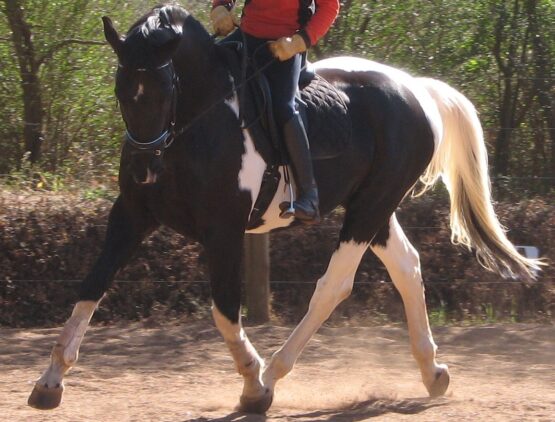
Problem-Solving
Common Issues in Horse Training
Resistance to Commands:
- Symptom: The horse may show resistance, hesitation, or refusal to obey commands.
- Possible Causes: Discomfort, confusion, fear, lack of trust, or behavioral issues.
Inconsistency in Performance:
- Symptom: The horse may perform well on some occasions but inconsistently on others.
- Possible Causes: Inadequate cues, distractions, health issues, or rider inconsistency.
Difficulty with Specific Maneuvers:
- Symptom: The horse struggles with specific movements or exercises.
- Possible Causes: Lack of understanding, physical limitations, or discomfort during the maneuver.
Fear or Anxiety:
- Symptom: The horse displays signs of fear, anxiety, or spookiness.
- Possible Causes: Past traumatic experiences, environmental factors, or lack of exposure.
Bucking or Bolting:
- Symptom: Unwanted behaviors such as bucking or bolting.
- Possible Causes: Pain, discomfort, fear, excess energy, or lack of respect for the rider’s cues.
Strategies for Addressing Challenges
Understanding the Root Cause
- Observation and Analysis:
- Carefully observe the horse’s behavior during training sessions.
- Analyze patterns, noting when issues arise and any specific triggers.
- Professional Evaluation:
- If the problem persists, consider seeking input from a professional trainer or veterinarian.
- A veterinary check can rule out underlying health issues contributing to behavioral problems.
Adjusting Training Techniques Accordingly
- Tailoring Training Approaches:
- Modify training techniques to suit the individual needs and learning style of the horse.
- Consider the horse’s personality, past experiences, and physical condition when adjusting approaches.
- Progressive Desensitization:
- Gradually expose the horse to stimuli that trigger fear or anxiety.
- Use systematic desensitization techniques to build the horse’s confidence over time.
- Addressing Physical Discomfort:
- Regularly check for signs of discomfort, such as ill-fitting tack or physical issues.
- Adjust tack, consult with a veterinarian, or consider alternative training exercises to alleviate physical discomfort.
- Consistent Communication:
- Ensure consistency in cues and commands across training sessions.
- Avoid conflicting signals and communicate clearly to reduce confusion.
- Rebuilding Trust:
- If trust issues are identified, focus on rebuilding the horse’s trust through positive interactions, patience, and consistent handling.
- Use positive reinforcement to reward desired behaviors and create positive associations.
Consistent Application of Strategies:
- Long-Term Perspective:
- Recognize that addressing certain issues may take time.
- Maintain consistency in applying strategies, understanding that gradual progress is often more effective than quick fixes.
- Regular Evaluation:
- Periodically evaluate the effectiveness of the chosen strategies.
- Be open to adjusting the approach based on the horse’s responses and progress.
Key Considerations:
- Patience and Persistence: Addressing challenges in horse training requires patience and persistence.
- Holistic Approach: Consider the horse’s physical, mental, and emotional well-being when devising solutions.
- Professional Guidance: Seek advice from experienced trainers, veterinarians, or equine behavior specialists for complex issues.
Building a Resilient Partnership:
Problem-solving in horse training is a dynamic process that involves understanding the root causes of issues and adapting training strategies accordingly. By approaching challenges with a combination of observation, analysis, and tailored adjustments, handlers can build a resilient partnership with their horses. This problem-solving mindset fosters a positive learning environment, enhances communication, and strengthens the bond between horse and rider.
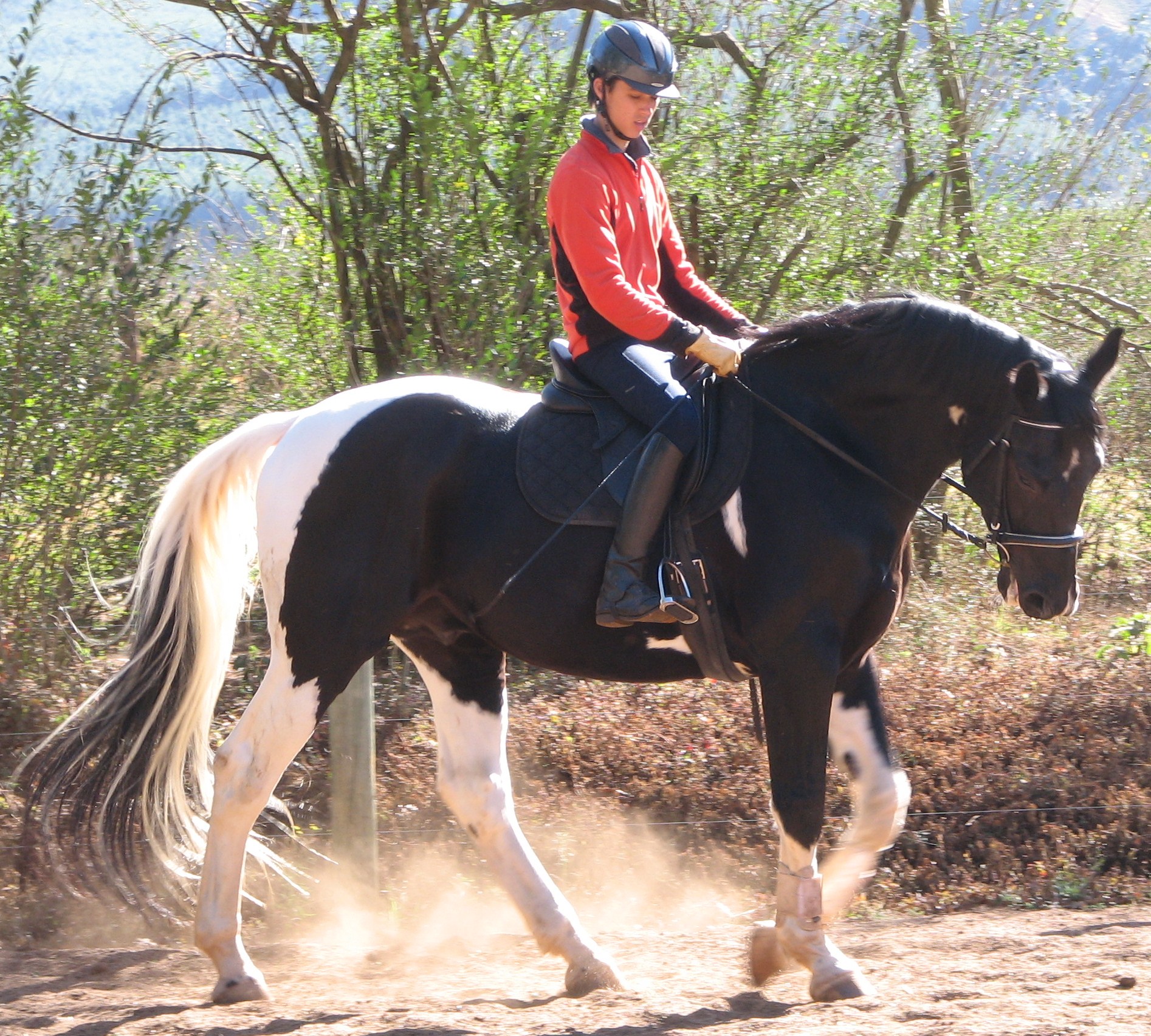
Building on the Basics
Gradual Progression in Training Exercises
Foundation Reinforcement:
- Consolidating Basic Commands: Before advancing to more complex exercises, reinforce the horse’s understanding of fundamental commands.
- Building Confidence: Gradual progression allows the horse to build confidence and trust in the handler’s cues.
Incremental Complexity:
- Adding Challenges: Introduce small challenges within the horse’s existing skill set, gradually increasing the complexity of exercises.
- Monitoring Response: Observe the horse’s responses to ensure they remain engaged and willing to learn.
Variety in Training Sessions:
- Diversifying Exercises: Include a variety of exercises to keep training sessions interesting and mentally stimulating for the horse.
- Balancing Physical and Mental Engagement: Combine physical activities with mental challenges to promote a well-rounded training experience.
Introduction to More Advanced Concepts
Collection:
- Definition: Collection refers to the horse bringing its hindquarters underneath its body, lifting the forehand, and engaging its core muscles.
- Importance: Collection enhances balance, agility, and responsiveness. It’s foundational for more advanced maneuvers.
- Exercises: Introduce exercises such as half-halts, circles, and transitions to encourage the horse to collect.
Lateral Movements:
- Definition: Lateral movements involve sideways motion, such as leg-yields, shoulder-in, and haunches-in.
- Benefits: Lateral movements enhance suppleness, flexibility, and coordination.
- Introduction: Begin with simple lateral exercises, gradually progressing to more complex movements as the horse becomes responsive.
Transitions:
- Definition: Smooth transitions involve seamless changes between gaits or movements, such as walk to trot, trot to canter, or transitions within a gait.
- Importance: Transitions improve balance, engagement, and overall responsiveness.
- Training Approach: Start with clear and simple transitions, ensuring the horse maintains rhythm and relaxation before advancing to quicker or more frequent changes.
Key Considerations:
- Fitness and Conditioning: Gradually increasing the intensity of exercises ensures the horse’s physical fitness and prevents fatigue or strain.
- Reinforcement of Basics: Even as advanced concepts are introduced, periodically revisit and reinforce basic commands to maintain a solid foundation.
- Positive Reinforcement: Continue to use positive reinforcement to reward the horse’s efforts and maintain motivation during more challenging exercises.
- Regular Assessment: Regularly assess the horse’s physical and mental well-being to ensure that the training remains positive and progressive.
Achieving Harmony in Advanced Training:
Building on the basics is a journey that involves a careful balance of gradual progression and introduction to more advanced concepts. By focusing on reinforcing the foundation, incorporating variety in exercises, and introducing advanced concepts like collection, lateral movements, and transitions, handlers create a training environment that promotes physical and mental development. This approach contributes to the development of a well-rounded, responsive, and harmonious partnership between the horse and the rider.
Conclusion
Recap of the Importance of Mastering Basic Building Blocks in Horse Training
In the world of horse training, mastering the basic building blocks is akin to laying the foundation for a strong and enduring structure. These fundamentals, ranging from understanding the horse’s behavior to developing clear communication through riding aids, serve as the cornerstone of a successful partnership between horse and rider.
Key Takeaways:
- Foundation of Communication: The basic building blocks establish a language of communication between horse and rider, fostering a relationship built on trust, respect, and understanding.
- Harmonious Partnership: By delving into the intricacies of groundwork, essential equipment, basic riding concepts, and the development of commands, trainers create an environment where the horse and rider can harmoniously work together.
- Path to Mastery: Recognizing the importance of patience, consistency, and problem-solving further contributes to the rider’s journey toward mastery. Addressing challenges and building on the basics set the stage for more advanced concepts.
Encouragement for Continued Learning and Development for Both Horse and Rider
Lifelong Learning:
- Dynamic Journey: Horse training is a dynamic journey that involves continuous learning and development. Whether you are a novice or an experienced rider, there is always room for growth.
Adaptability and Flexibility:
- Responsive Training: Horses are individuals with unique personalities and needs. Stay adaptable and flexible in your training approach, tailoring techniques to suit the horse’s temperament and preferences.
Consistent Bond Building:
- Deepening Connections: Invest time in deepening the bond with your horse. Consistent positive interactions, patience, and understanding contribute to a bond that goes beyond training sessions.
Exploration of Advanced Concepts:
- Gradual Advancement: As you master the basics, explore advanced concepts such as collection, lateral movements, and intricate transitions. These elements contribute to a more nuanced and sophisticated partnership.
Mental and Physical Well-being:
- Holistic Approach: Prioritize the mental and physical well-being of both horse and rider. Regular assessments, proper conditioning, and a focus on positive reinforcement contribute to a healthy and thriving partnership.
Joy of Riding:
- Celebrate Achievements: Acknowledge and celebrate the achievements, no matter how small. The joy of riding and the camaraderie with your horse are the heart of the equestrian experience.
Embracing the Journey:
In conclusion, the journey of horse training is not a destination but an ongoing exploration. Mastering the basic building blocks sets the stage for a fulfilling and rewarding experience, fostering a connection that goes beyond the arena. As you continue to learn, adapt, and deepen your understanding of your equine partner, you embark on a journey of shared growth, mutual respect, and the joy of riding in harmony. May your journey be filled with enriching experiences and the profound bond that defines the world of horse and rider. Happy trails!
further reading
Groundwork For Horses | Straightness Training How to do groundwork training with your horse. Valuable tips and information on groundwork training and how to teach your horse basic & advanced exercises.
Basic Horse Training The basic horse training principle in natural horsemanship is to release pressure when he has done the RIGHT thing. If you don’t release the pressure, he won’t …
